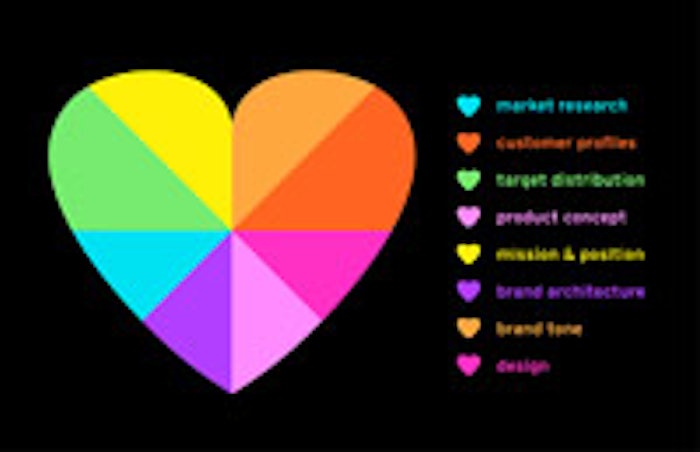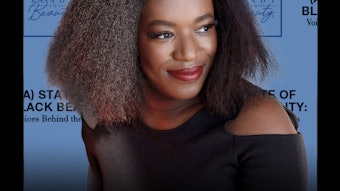
- There are many challenges facing a start-up beauty brand, so having a set strategy helps mark a path for success.
- Eight key components are critical to formulating a good strategy—market research, customer profiles, target distribution, product concept, mission and position, brand architecture, brand tone and design.
- Adding up the information from these eight components for your brand helps cut through the retail clutter and make a meaningful connection with consumers.
Statistics provided by the U.S. Small Business Administration—based on research from the U.S. Department of Commerce, Census Bureau, Business Dynamics Statistics; U.S. Department of Labor, Bureau of Labor Statistics, BED—indicate that 50% of start-up brands will not survive their first five years of business. There are many factors contributing to this failure rate, and one of them most definitely is certainly insufficient capital. To combat this, start-ups need to define a clear brand strategy for differentiating themselves in the market. This crucial element of planning is what separates the 50% of successes from the rest of the pack.
For beauty brands in particular, large expenses are ahead in product development—from formulations to the manufacturing minimums required to simply get out of the gate. Given that, the cost of creating a targeted brand strategy is relatively minimal. Yet, so often, crucial planning steps are forgotten.
A well-crafted brand strategy is the backbone for bringing your unique story to life.
Defining who you are and where you are going is hard work, especially with all the other items on your to-do list. It often requires the assistance of outsiders with fresh perspective, and those who outline the real opportunities for their brand in the marketplace are rewarded.
Here is why. A brand without a clear strategy is an empty shell. If you are not clearly defining your brand, someone else will. A well-crafted brand strategy is the backbone for bringing your unique story to life. Unless you have a clear strategy, no credible designer, marketer or sales rep will be able to craft your story into a compelling visual or message. They will merely fill your empty shell with their personal interpretations.
The following are eight components boutique marketing and design agency MSLK has found to be crucial in developing a brand strategy. The order in which you achieve them is not as important as the need to address each one.
Market Research
It is exceedingly important to know what is trending in your competitive space. Are expenditures in this category trending up or down? What are consumers looking for? What are hot topics, ingredients and areas of interest? If you already have a brand presence, how do customers perceive your existing brand? Where are the opportunities or white space in this market?
Customer Profiles
It is important to be honest about the demographic profile of the customer who will appreciate and benefit the most from your offering. Many beauty brands today define their target customers as “women ages 18–55” or “today’s modern women.” These broad swaths of the general public are not adequate customer profiles.
Your brand will always have an opportunity to capture peripheral consumers, but you will penetrate the market most effectively if you are honest about who your core, loyal customers are, and seek a more narrow target. MSLK likes to create names and personas around these profiles. This allows the creation of promotions that speak to customers on a personal level.
Target Distribution
With clearly defined customer profiles, information such as your customers' spending preferences and shopping patterns will emerge. Keep this in mind as you establish a distribution plan.
It is important to bring your distributors into the brand development conversation early on. Presenting them with clear and compelling information on why their customers are also your customers is crucial. Remember, in today's crowded market, every inch of space a retailer dedicates to your brand is space they must take away from another product. Give them a reason to choose you.
Direct and indirect sales online, as well as sales from other media, should be considered in the equation. During this stage you will certainly want your finance team to consider your market research and verify if you have a viable revenue model.
Product Concept
One of the ways to cut through the clutter and stand out to consumers and distributors is to have a clear product concept. Whether this is a key ingredient, a series of key ingredients, a new product form, a unique delivery system or clinical trials to prove the product's efficacy, these compelling stories can help you define your product’s point of difference in the market.
Mission and Position
With your customers, distribution and product concept clearly defined, you are well on your way to having a strong mission and position. Your mission statement will help solidify and clarify your distinct place and purpose in the market for every member of your team. Your positioning (in both written and chart form) will provide an overview of where you sit in the marketplace in relation to your competitors. Use this information as a guide for every decision your company makes.
Brand Architecture
Brand architecture helps put all of these strategies into a clear hierarchy. Brand architecture establishes how your product line(s) will be organized now and, potentially, in the future. Will you have multiple levels of product lines, such as prestige and mass, to target different distributors? Will your products be organized by ingredient story, key consumer benefits or by daily regimen?
These decisions affect your business structure, marketing approach and the consumer communication on your packaging itself. A designer can then use tools like color, imagery and typography to help bring clarity to your brand architecture.
Brand Tone
For some, brand tone is the genesis of their product line, while others may find that this is the most elusive component. Brand tone is one of the most critical aspects to identify before design and creative visualization begins. Brand tone determines the overall feeling customers will receive when they experience your brand in person or online. Will your brand be seen as "a clinical professional product that speaks with a tone of authority?" Or will you be seen as "a friendly and approachable brand, as gentle as nature intended?"
Many insights for finding a brand tone come from the personality of key stakeholders and spokespersons, as well as the brand positioning charts and brand architecture. Your brand tone should be naturally congruent with the brand's DNA.
Design
Design alone is just one part of telling a compelling brand story. Without the foundation of the previous steps of strategy and positioning to communicate, design can often fall flat.
A smart design strategy turns the highly subjective process of evaluating art into an objective process. With the other parts defined, we can evaluate the fonts, colors, imagery, copy and overall mood of the designs by asking questions such as, does this convey the brand's mission and position? Is the brand architecture clear? Does it stand out among the competition? Is it compelling to the consumer?
Adding Up the Eight
In this manner, all eight components add up and help a brand cut through the retail clutter, connect with consumers, and become an enduring, sustainable brand that defies the odds.
Sheri L. Koetting is the co-founder and chief strategist of MSLK, a marketing and design agency based in New York. MSLK specializes in helping beauty brands find their voice in today's crowded marketplace through 360° brand positioning—from overall brand strategy to brand identity, packaging, retail experience, websites and social media campaigns. [email protected]; www.mslk.com










